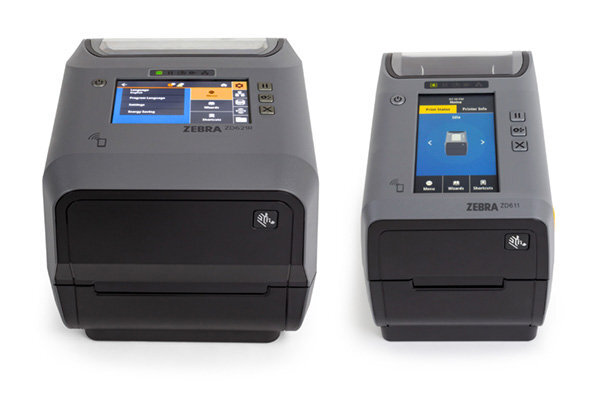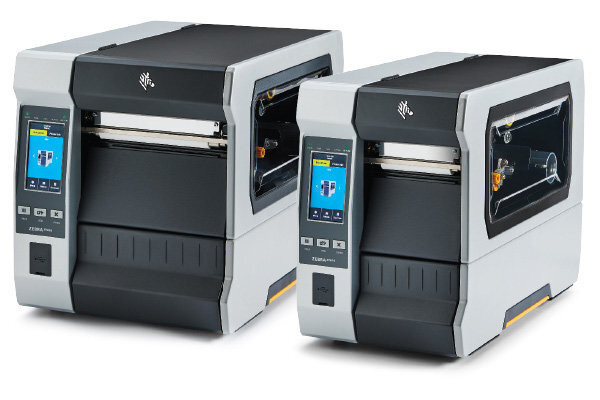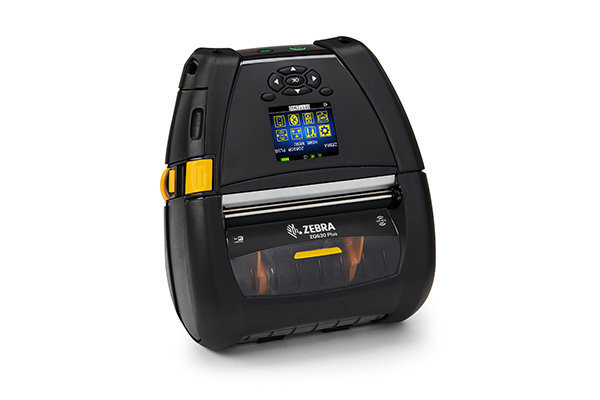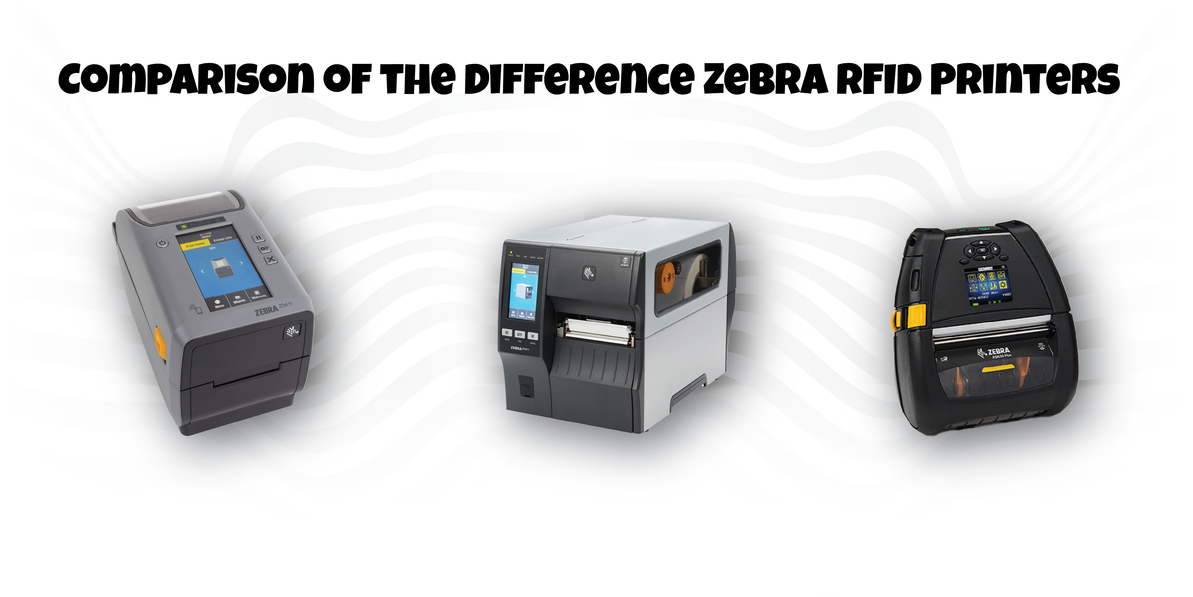Ultimate Comparison of Zebra RFID Printers: Desktop vs. Industrial vs. Mobile
RFID printing is no longer a niche capability—it’s a cornerstone of modern asset tracking, inventory management, and supply chain visibility. Zebra Technologies, a leader in RFID innovation, offers a robust lineup of RFID printers across three primary categories: desktop, industrial, and mobile. Each serves distinct operational needs, environments, and throughput requirements.
This guide breaks down the differences, strengths, limitations, and best-fit use cases for each category, with a focus on Zebra’s flagship models.
Why RFID Printers Matter
RFID printers do more than print barcodes—they encode RFID inlays with data, enabling real-time tracking of assets, shipments, and inventory. Choosing the right printer impacts:
- Encoding accuracy
- Label durability
- Operational efficiency
- Integration with existing systems
Desktop RFID Printers
Overview
Zebra’s desktop RFID printers are compact, affordable, and ideal for low-to-medium volume printing. They’re perfect for retail, healthcare, and office environments where space is limited and print jobs are intermittent.

Key Models
|
Model |
Print Resolution |
Connectivity |
RFID Type |
Notable Features |
|
203 dpi |
USB, Ethernet, Wi-Fi, Bluetooth |
UHF |
Color LCD, compact footprint |
|
|
203/300 dpi |
USB, Serial, Ethernet, Wi-Fi, Bluetooth |
UHF |
Advanced media handling, high-resolution option |
Pros
- Small footprint for tight spaces
- Lower cost of ownership
- Easy setup and operation
- Supports standard RFID encoding
Cons
- Limited media capacity
- Slower print speeds of rfid printer
- Not suitable for high-volume environments
Best Use Cases
- Retail price tagging
- Healthcare wristbands and specimen labels
- Small business asset tracking
Industrial RFID Printers
Overview
Built for rugged environments and high-volume operations, Zebra’s industrial RFID printers are the workhorses of manufacturing, logistics, and warehousing.

Key Models
|
Model |
Print Resolution |
Connectivity |
RFID Type |
Notable Features |
|
203/300 dpi |
USB, Serial, Ethernet, Bluetooth |
UHF |
Metal frame, large media capacity |
|
|
203/300/600 dpi |
USB, Serial, Ethernet, Wi-Fi, Bluetooth |
UHF |
High-resolution printing, RFID calibration |
|
|
203/300/600 dpi |
USB, Serial, Ethernet, Wi-Fi, Bluetooth |
UHF |
6-inch wide labels, 24/7 durability |
Pros
- High-speed printing for thousands of labels per day
- Durable metal construction
- Advanced RFID encoding with tag placement tolerance
- Supports wide label formats and specialty media
Cons
- Higher upfront cost
- Requires more space and training
- Overkill for low-volume environments
Best Use Cases
- Manufacturing work-in-progress tracking
- Warehouse pallet labeling
- Logistics and distribution centers
- Government and defense asset management
Mobile RFID Printers
Overview
Zebra’s mobile RFID printers are designed for field operations, enabling on-the-go printing and encoding. They’re battery-powered, lightweight, and built for mobility.

Key Models
|
Model |
Print Resolution |
Connectivity |
RFID Type |
Notable Features |
|
203 dpi |
Wi-Fi 6, Bluetooth 5.x |
UHF |
Belt clip, linerless printing, long battery life |
Pros
- Portable and lightweight RFID printers
- Ideal for field service and retail floor operations
- Wireless connectivity for real-time updates
- Reduces trips to centralized printing stations
Cons
- Smaller media rolls
- Lower throughput
- Limited encoding precision compared to industrial models
Best Use Cases
- Retail shelf labeling
- Field asset tagging
- Mobile inventory audits
- Event management and ticketing
Feature Comparison Matrix
|
Feature |
Desktop |
Industrial |
Mobile |
|
Print Volume |
Low to Medium |
High |
Low |
|
Durability |
Moderate |
High |
Moderate |
|
Portability |
Low |
Low |
High |
|
Encoding Accuracy |
Standard |
Advanced |
Standard |
|
Media Capacity |
Small |
Large |
Small |
|
Connectivity |
USB, Ethernet, Wi-Fi |
Full suite |
Wi-Fi, Bluetooth |
|
Best For |
Retail, Healthcare |
Manufacturing, Logistics |
Field Ops, Retail Floor |
Deployment Strategy Tips
- Volume Forecasting: Estimate daily label output to avoid bottlenecks.
- Environment Mapping: Match printer durability to physical conditions (dust, heat, vibration).
- Integration Needs: Ensure compatibility with ERP/WMS systems and RFID readers.
- Label Design: Choose printers that support your label size, inlay type, and encoding format.
- Mobility vs. Throughput: Don’t sacrifice encoding accuracy for portability unless the use case demands it.
Conclusion
Zebra’s RFID printer lineup offers unmatched flexibility across operational environments. Whether you're outfitting a retail backroom, a manufacturing floor, or a mobile workforce, there's a Zebra RFID printer tailored to your needs.
- Opt for desktop models for simplicity and space-saving benefits.
- Opt for industrial printers when scale and durability are paramount.
- Deploy mobile printers when agility and field access are most critical.
Recent Posts
-
RFID Gate Portals in Retail and Warehouses
The landscape of retail and warehouse operations is undergoing a profound transformation, moving awa …Dec 18th 2025 -
Why Add RFID to Your Labeling Strategy in 2026
In 2026, the global supply chain is undergoing a seismic transformation. From omnichannel retail to …Dec 11th 2025 -
Zebra Handheld RFID Readers for Retail Efficiency
In the dynamic world of retail, where inventory accuracy, customer experience, and operational effic …Nov 28th 2025




